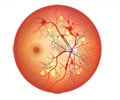A drug that was developed to combat age-related macular degeneration (AMD) could be beneficial for people with a common form of diabetic retinopathy, according to a study.

DME is the main cause of vision loss in people with diabetes mellitus.
After one-year follow-up, the researchers found that nearly 50pct of study patients who received the new combined treatment had substantial improvement in vision, compared with 28pct who received laser treatment alone.
Laser treatment has been the standard of care for DME for 25 years.
"The results appear to be applicable to most people who have DME in the center of the macula with some vision loss, whether the person has Type 1 or Type 2 diabetes, is old or young, or is a woman or a man," said Dr. Neil M. Bressler at Johns Hopkins University School of Medicine.
"This is a seminal study of which ophthalmology should be very proud. First and most importantly, it provides patients an improved therapy for diabetic macular edema. Second, the DRCR Network study is the first multi-center, randomized clinical trial to show how ranibizumab and the laser work together to improve treatment," said Dr. George A. Williams, from Oakland University William Beaumont School of Medicine.
Advertisement
At the one year follow up patients who had received ranibizumab with prompt or deferred laser treatment had, on average, significantly better visual acuity than the group treated with laser alone.
Advertisement
In patients who entered the study after having cataract surgery and lens implants, results for corticosteroids plus laser treatment appeared comparable to the ranibizumab results, but intraocular pressure (IOP) increased in some corticosteroid-treated patients.
Elevated IOP is undesirable because it can increase the risk of glaucoma.
Negative outcomes were minimal in patients treated with ranibizumab.
Results at two years were comparable to year one, but the researchers urge further study to confirm the longer-term safety and effects of ranibizumab for diabetic macular edema patients.
The study was published in Ophthalmology online, the journal of the American Academy of Ophthalmology (Academy).
Source-ANI
TAN













